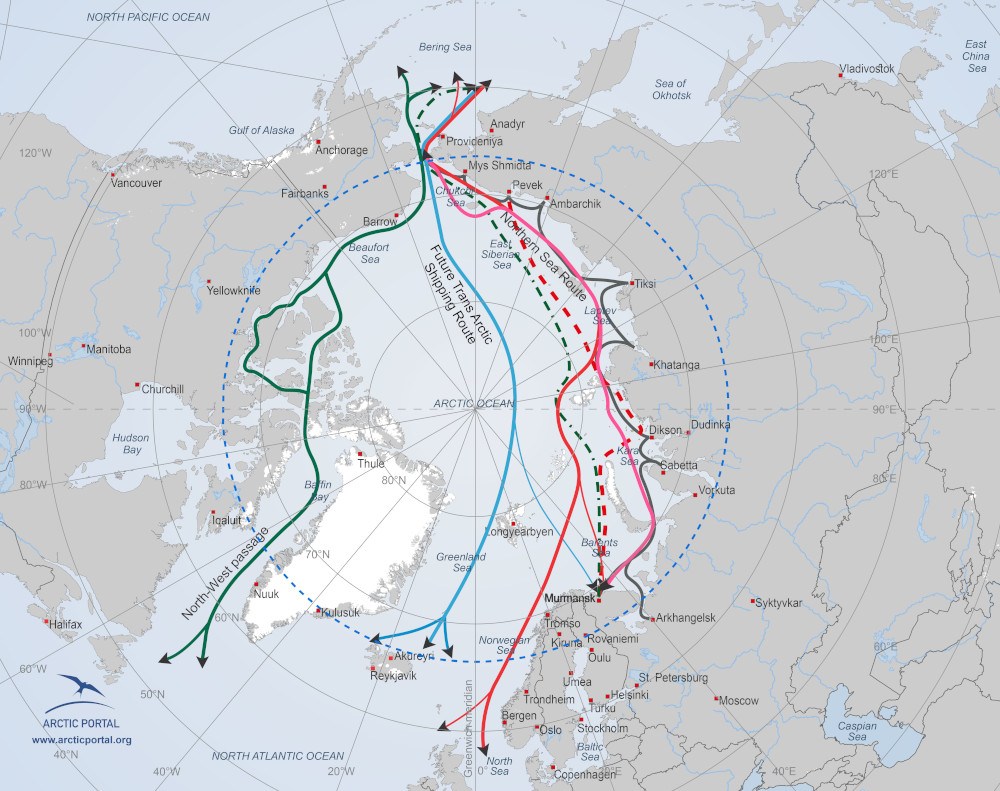The Arctic is comprised of a large ocean area and land areas of eight states: Canada, Denmark (Greenland), Norway, Russia, USA (Alaska), Finland, Sweden and Iceland. The Arctic’s most pronounced feature, at least until very recently, has been the large ice-covered ocean. However, significant changes are taking place in the Arctic area, both on land and especially on the maritime areas.
Climate Change and Its Impact
The 2004 Arctic Climate Impact Assessment listed the range of impacts that are occurring in a warming Arctic due to the human-influenced climatic change. The report concluded that the air temperature has risen at twice the rate as in the rest of the world in the past few decades and there is increasing evidence of widespread melting of glaciers, permafrost and sea ice.
The earth’s climate change, primarily due to increased emissions of carbon dioxide and other greenhouse gases, has been particularly intense in the Arctic. These changes have already reduced the extent and thickness of the sea ice in the Arctic Ocean.
Regional Activity and the Northern Sea Route
With its fleet of polar icebreakers, Russia has been able to use its Northern Sea Route for up to 6 months a year, although such use has thus far been limited to the support of exploration of its own resources and has not included international shipping. Such shipping, however, is bound to develop within the foreseeable future, particularly since the ice obstacle is not quite as severe on the Russian side of the North Pole.
The Broader Drivers of Trans-Arctic Shipping
Although Trans-Arctic shipping is commonly linked with favorable weather conditions, i.e. warmer climate, ice-free ocean and relatively calm weather, climate is not the only issue encouraging Trans-Arctic shipping.
Currently the main driving force for shipping trough the Arctic Sea is transport of oil or gas from Arctic Russia. The discussion on Trans-Arctic shipping evolves, however, also around the issues of global warming, Greenhouse Gas emission restrictions, changes in the geopolitical landscape, possible exploitation of fossil fuel fields in the Arctic and sustainable development in the Arctic.
Although those factors do not possess predominant force to encourage Trans-Arctic shipping single-handedly, together they form a great pressure on the global society to prepare for new transportation routes. To find out more information with regards to exploration and exploitation of Arctic natural resources.
The Role of Technology and Costs
New technologies are important and sometimes essential for development in the Arctic. New ships with icebreaker abilities can shorten the transportation route from Yokohama (Japan) to Rotterdam from 11.212 nm (Suez Canal) to 7.825 nm which is roughly 30% shorter. This difference does however not have any relevance yet, because the cost of these new ships are at average 150% on top of the cost of a normal new cargo ship.
This means that it is unlikely that Trans-Arctic shipping can become lucrative, unless oil-price and charges for shipping canals rise and the building cost of Arctic-suitable ships drops.
The Uncertain Future of Arctic Shipping
However, a continuation in reduction of sea-ice in the Arctic may render this formula obsolete so it is hard to point a finger on when Trans-Arctic shipping will emerge as a competitive commercial transport alternative.
Extraction and Transportation Challenges
It is worth mentioning that technological advancement in the sector of extraction of non-renewable resources can also affect advancement in navigation. Extraction at -40°C does not have any practical value unless transportation of oil and gas from these remote locations is both technologically possible and economically feasible.









